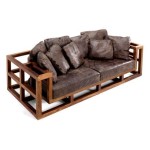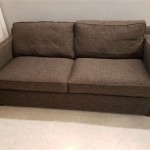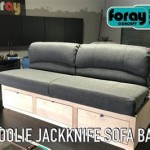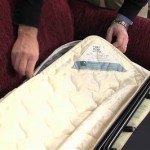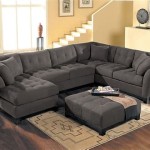How To Recover A Sofa Cushion With Piping
Recovering sofa cushions can significantly refresh a living room's aesthetic without the expense of purchasing new furniture. Adding piping, also known as cording, provides a tailored, professional finish. This article outlines the process of recovering a sofa cushion with piping, providing a comprehensive guide for DIY enthusiasts.
Gathering Materials and Tools
Before beginning the project, assembling the necessary materials and tools ensures a smooth and efficient workflow. Accurate measurements are crucial for determining the correct amount of fabric and piping.
- Measuring tape
- Fabric (amount determined by cushion measurements)
- Piping cord
- Zipper (optional, but recommended)
- Seam ripper
- Scissors
- Sewing machine
- Thread (matching the fabric)
- Pins
- Zipper foot (for sewing machine)
- Piping foot (for sewing machine)
- Iron and ironing board
Deconstructing the Existing Cushion Cover
Carefully deconstructing the existing cushion cover provides a template for the new cover. Preserving the original cover intact allows for accurate measurements and minimizes errors during the cutting and sewing process.
- Remove the existing cover from the cushion.
- If a zipper is present, open it fully.
- Using a seam ripper, carefully separate the seams of the cover.
- Press the disassembled pieces flat with an iron.
- These pieces will serve as your pattern.
Creating the Piping
Piping adds a sophisticated touch to the finished cushion. This step involves encasing the piping cord within a bias-cut strip of fabric. The bias cut allows the fabric to curve smoothly around the edges of the cushion.
- Cut bias strips of fabric, wide enough to wrap around the piping cord with a seam allowance.
- Wrap the fabric strip around the piping cord, ensuring the cord is centered.
- Using a zipper foot or piping foot, stitch close to the cord, encasing it within the fabric strip.
Cutting the Fabric
Accurate cutting is essential for a well-fitting cover. Using the deconstructed cover pieces as a pattern ensures the new cover will match the original cushion dimensions. Adding seam allowances is critical for proper construction.
- Lay the deconstructed cover pieces on the new fabric.
- Pin the pieces securely to the fabric.
- Cut around the pattern pieces, adding a seam allowance (typically ½ inch to 1 inch).
- Mark the location of the zipper on the fabric pieces if using one.
Attaching the Piping
Attaching the piping requires precision to achieve a professional look. Pinning the piping securely before sewing ensures even placement and prevents shifting during the sewing process.
- Pin the piping to the right side of the fabric panels, aligning the raw edges.
- Using a zipper foot or piping foot, stitch the piping to the fabric, stitching close to the cord.
- Ensure the piping is evenly distributed around the edges of the fabric panels.
Sewing the Cushion Cover
With the piping attached, the final step involves sewing the cushion cover panels together. A zipper allows for easy removal and cleaning of the cover.
- If using a zipper, install it according to the zipper manufacturer's instructions.
- Pin the fabric panels together, right sides facing, aligning the piping.
- Stitch the panels together, using a seam allowance consistent with the piping attachment.
- Reinforce the seams at stress points, such as corners.
- Turn the cover right side out.
Inserting the Cushion
Once the cover is complete, insert the cushion form into the new cover. Ensure the cushion fits snugly within the cover and adjust if necessary.
- Carefully insert the cushion form into the new cover.
- Zip the cover closed (if applicable).
- Smooth out any wrinkles or creases in the cover.
Finishing Touches
After inserting the cushion, inspect the finished product for any loose threads or imperfections. Trimming excess threads and pressing the seams ensures a polished, professional appearance.
- Trim any loose threads.
- Press the seams with an iron for a crisp, tailored look.

How To Sew Sofa Cushions With A Piped Edge Collective Gen

How To Make A Cushion With Piping Box Tutorial Thrift Flip Makeover

How To Make A Cushion With Piping Box Tutorial Thrift Flip Makeover

Reupholstery 101 My Thrift Loveseat Redo Part 2 Tutorial

How To Add Piping Dining Room Chairs Confessions Of A Serial Do It Yourselfer

Simple Sew Box Cushion Cover Centsational Style

How To Recover A Cushion On Recliner

Vintage Sofa Reupholstery Of A Family Heirloom Willow Bloom Home

How To Make A Cushion With Piping Ofs Maker S Mill

How To Recover A Cushion On Recliner

